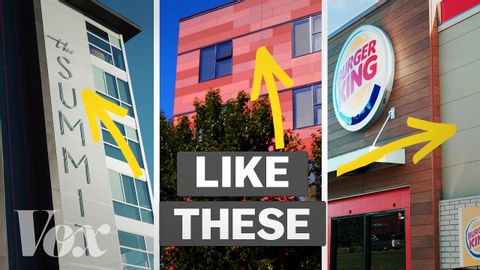新しいビルが長方形で覆われている理由 (Why so many new buildings are covered in rectangles)
林宜悉 が 2022 年 05 月 18 日 に投稿  この条件に一致する単語はありません
この条件に一致する単語はありませんUS /ˈkɑnʃəs/
・
UK /ˈkɒnʃəs/
US /məˈtɪriəl/
・
UK /məˈtɪəriəl/
- n. (c./u.)衣料;原材料;原料
- adj.関連な,重要な;世俗的な : 物質的な : 物質でできた
- n. (c./u.)模範 : 見本;模様 : 柄;様式;規則性;型紙
- v.t.模倣する;模様をつける
US /ˈstrʌk.tʃɚ/
・
UK /ˈstrʌk.tʃə/
- n. (c./u.)構造;建物
- v.t.組み立てる;組織する
エネルギーを使用
すべての単語を解除
発音・解説・フィルター機能を解除
